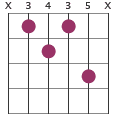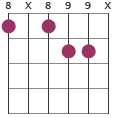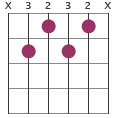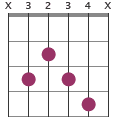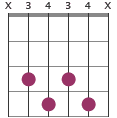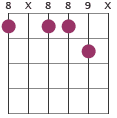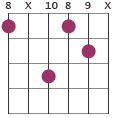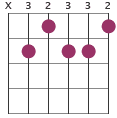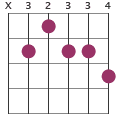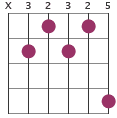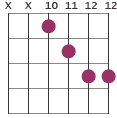Altered chords
Altered chords, or alterations, means that a note in the chord is altered. For example, a C9 chord with flattened fifth would result in a C9b5. This can be illustrated in the following comparison:
- C9: C E G Bb D
- C9b5: C E Gb Bb D
Alterations also involve sharpen notes, as in C9#5. An illustration of this alteration by a comparison:
- C9: C E G Bb D
- C9#5: C E G# Bb D
The following will look closer on some altered chord categories:
Various altered chords
C7b5
C7#5
C7b9
C7#9
Cm7b5
Cm7#5
Cm#5
C9b5
C9#5
C13b5
Cmaj7#11
The chord names
The flatted tone is sometimes marked with a minus sign instead of the flat sign: C7-5. They are also often written partly in parenthesis, marking the alternating part of the chord: C7(b5).
The sharpened tone is sometimes marked with a plus sign instead of the flat sign: C7+5.
Theory
Altered chords tend to be atonal (use notes outside the key). The flat 9th, sharp 11th is so-called altered dominant tones that creates chords such as F7(b9) and G7(#11).
To illustrate, C7b9, C9 and C7#9 can be compared with their intervals:
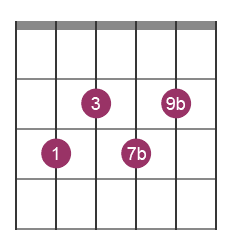
C7b9 with Db tone (9b) on 2nd fret, 2nd string
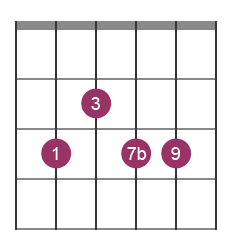
C9 with D tone (9) on 3rd fret, 2nd string
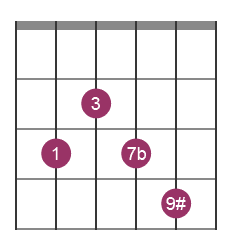
C7#9 with D# tone (9#) on 4th fret, 2nd string
Progressions
Altered chords are most used in jazz. They are often used as passing chords or substitutions, including tritone substitutions. This will be illustrated with two chord progressions, see below.
They are often used as passing chords or substitutions, including tritone substitutions. This will be illustrated with two chord progressions:
Using an altered chord as a passing chord can be made by placing it directly before or after its non-altered version and both are often played in in measure:
Bm7 - E7 - E7b9 - Amaj7
Using an altered chord as a substitution can be made by replacing its non-altered version with it:
Bm7 - E7b9 - Amaj7 (instead of Bm7 - E7 - Amaj7)
Another progression incluing a dominant 7th flattened 9th:
Am - G7 - Fmaj7 - E7(b9) (023130)
A progression with closed voicings suitable for jazz:
Am7 - D9 - G6 - C7(b9) (X3232X)
Various progression incluing altered chords:
Am7 - D7b5 (X5657X) - Dm7b5 - (X5656X) - Gmaj7
Gm/D - C9+5 (X32334) - C9 - Fmaj7 (X03555)
Bbma7 - Bbmaj13 - C9 - C9+5 - Fmaj7
Back to chord types
